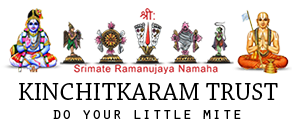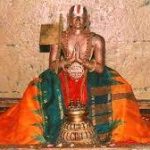Swāmi , here’s an excerpt from an article I read.
“Harivamṣa 3.88. 61, 61, 62 which are addressed by Maheśwara during the Kailāsa yātra episode:
nāmāni tava govinda yāni loke mahānti ca ।
tānyeva mama nāmāni nātra kāryā vicāraṇā ॥
Note what that shloka says. It only says all names apply to both, not that they are identical. This is because Shiva begins this section by first saying the following,
ahaM tvaM sarvago deva tvamevAham janArdana |
“sarvatragO” explains why Shiva is saying this. It is a reference to all-pervasiveness. This all-pervasiveness is because everything is his body, and just as an Atma pervades a body, and all names of the body refer to the Atman, Bhagavan has pervaded Shiva and thus names of Shiva refer to Hari. Names of Hari refer to Shiva on this account as well, because when the Atman is being referred to, it includes the body as well.
So, explaining the whole shloka:
āvayorantaraṃ nāsti śabdairarthairjagatpate ।
nāmāni tava govinda yāni loke mahānti ca ॥
tānyeva mama nāmāni nātra kāryā vicāraṇā ।
tvadupāsa jagannātha sevāstu mama gopate ॥
yaśca tvāṃ dveṣṭi deveśa sa māṃ dveṣṭi na saṃśayaḥ ।
na tadasti vinā deva yatte virahitaṃ kvacit ॥
yadāsīdyacca varteta yacca bhāvi jagatpate ।
sarvaṃ tvaṃ deva deveśa vinā kiñcitvayā na hi ॥
Meaning: O Lord who possesses the Universe as his body! there is no difference between us in terms of words and their meanings (which extend to the antaryAmin by virtue of body-soul relationship). (On account of this), Whatever names are applicable to you are applicable to me too. Whoever worships you worships me too. Whoever hates you, he hates me too. There is nothing whatsoever that is without you. Whatever was, Whatever is, Whatever will be, is due to you. You are everything; there is nothing without you, O Lord of the Gods.
By the term “AvayorantaraM nasti”, note that Shiva says there is no difference between them *in terms of words and meanings*. So, he is not saying there is no difference at all or implying identity here, but is proving sharIrAtma bhAva. Since Shiva is the body and the Lord is the innerself (yasya Atma sharIraM), both body and soul are denoted by the same name, just as “Jack” denotes both Jack’s body and Jack’s self.
So, when one says “Shiva”, it can refer to the deva, and also to his antaryAmin, nArAyaNa. Similarly, when one says “nArAyaNa”, it can refer to the Lord and also Rudra-sharIraka-paramAtma, of whom Rudra is his body and hence an inseparable attribute. This explains how the Lord can do a penance by praising Shiva (the praise goes to his antaryAmin only) and how the shAstras (such as the shiva stuti in the bhAgavataM) refer to Shiva with attributes of supremacy (again, only refers to his antaryAmin).
Note that Shiva clearly says in the end “sarvaṃ tvaṃ deva deveśa vinā kiñcitvayā na hi” – You are everything, and nothing exists – This has two implications:
1 )Firstly, by saying “sarvam tvam”, Shiva clarifies that just as everything is him, so is Shiva (aham tvam) and this is because of all-pervasiveness (sarvatrago). That is, the Lord who is sarvAntaryAmin (sarvaM) and rudrAntaryAmin (ahaM) is Krishna only (tvaM).
2) Without him, there is nothing – Just as a body cannot exist without the Atma, neither can “Sarvam” (everything) or Shiva.
Even in the Gita, Arjuna says in the 11th chapter, “as you pervade everything, you are everything!”.
By addressing the Lord as “Jagatpati”, Shiva clarifies that there is no identity, but the above oneness due to sharIrAtma bhAva. “pati” means possessing the Jagat (as his body/inseparable attribute).
He is everything, meaning, he is the innerself of everything which is his body. Without him, there is nothing, meaning, just as a body cannot exist without the self, nothing can exist without being his body.” Is this the sloka Devareer were talking about?

